Winter is an ideal time for fly anglers to focus on preparing for the trout fishing season ahead. It’s the perfect opportunity to reflect on past outings, fish takes and restock your fly boxes with tried-and-true patterns while also exploring new ones. Experimenting with new trout fly patterns and different tying materials allows you to adapt to changing fishing conditions. Not only does this improve your ability to select the right flies, but it also enhances your skills on the vise, refining both your tying techniques and your ability to present flies effectively on the water.
These 10 highly recommended trout flies and their patterns are endorsed by Franklin Club members and experienced Club Pros, have been rigorously tested and proven effective on the water. Designed to give you confidence and consistent success, they’re versatile and reliable for targeting trout in Ontario’s streams, rivers, and stillwaters. Gather your tools, take note of any materials used you may require, and dive into tying these essential patterns to have available in your fly box.
Let’s get started!
Little Brook Trout Fly
Recommended by: Gary Baldackin
A unique pattern that mimics small brook trout, perfect for targeting predatory fish like large trout and bass. The Little Brook Trout Fly’s vibrant colors and lifelike movement make it especially effective in clear water where predatory fish rely on visual cues. This pattern is an excellent choice when fishing near submerged structures, fallen trees, or rocky areas where predatory fish often lurk. By varying the retrieve speed and depth, you can trigger aggressive strikes from even the most cautious fish.
- Materials: Colorful body materials, hackle, and a streamer hook.
- Tips: Fish it near structure for best results. Recommended hook sizes: 6-10 for great for catching bigger fish like trout or bass.
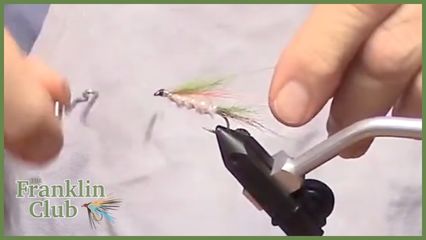
The Blob Fly
Recommended by: Bob Wood
This vibrant pattern is highly effective for stillwater fishing, especially during the early season when fish are attracted to bright, flashy colors that stand out in colder, clearer water conditions. Blob flies are particularly useful when fished on a slow retrieve or as part of a tandem rig. They are great for provoking reaction strikes from trout and other gamefish.
- Materials: UV Blob Fritz, marabou tail.
- Tips: Experiment with color combinations to match local conditions. Recommended hook sizes: 8-12 for optimal performance in a variety of water conditions.
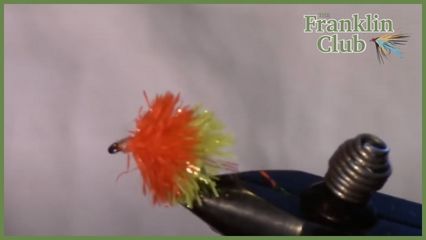
Zebra Worm
Recommended by: Ian Collin James
A simple yet deadly pattern, the Zebra Worm mimics aquatic worms commonly found in rivers and lakes. Its slender profile and bead head design allow it to sink quickly, making it an excellent choice for nymphing in deeper waters or faster currents. The Zebra Worm is particularly effective during the cooler months when aquatic worms are a primary food source for trout.
- Materials: Sharpe Marker, wire ribbing, micro chenille.
- Tips: Adjust the size and color for different water bodies. Recommended hook sizes: 12-16 to match the natural size of these worms.
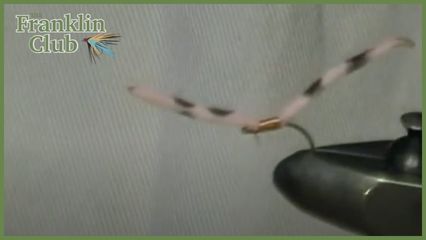
Woolly Worm
Recommended by: Gary Baldackin
A proven pattern for both rivers and stillwaters, the Woolly Worm is a staple for any angler’s fly box. Known for its versatility and simplicity, this pattern mimics various aquatic prey, including caterpillars, nymphs, and larvae. Its robust design makes it durable, ideal for long days on the water. Whether fished as a dry fly or submerged, the Woolly Worm is effective in attracting trout, bass, and even panfish. Use it in a variety of colors to match the hatch or local conditions for maximum results.
- Materials: Chenille body, saddle hackle, and marabou tail.
- Tips: Use weighted versions for deeper runs. Recommended hook sizes: 8-12 for versatility in different water conditions.
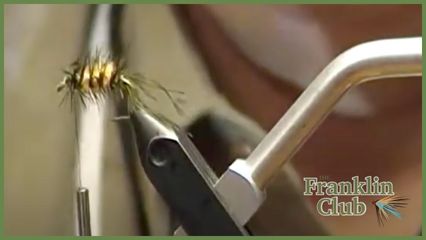
Peacock
Recommended by: Ian Collin James
This classic pattern is versatile and works in a variety of fishing conditions. Its iridescent peacock herl body mimics a range of aquatic insects, making it a reliable choice for trout and other gamefish year-round. Use this fly during hatches or as an attractor pattern when fish are less active. Adjusting the tinsel color or adding a small bead head can enhance its appeal and adapt it for different water conditions.
- Materials: Peacock herl, red thread, and tinsel.
- Tips: Perfect for trout and other gamefish. Recommended hook sizes: 10-14 for optimal performance in most scenarios.
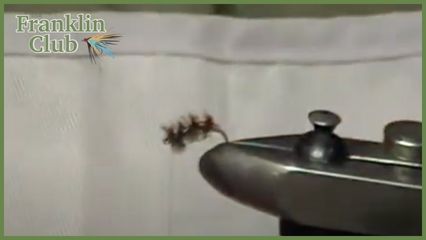
Copper John
Recommended by: Gary Baldackin
This nymph pattern is highly effective for trout, imitating various subsurface prey such as mayfly nymphs, caddis larvae, and small crustaceans. Its durable construction and weight make it a reliable choice for fishing deeper runs and fast currents where trout feed actively. Experimenting with different wire colors and sizes allows anglers to adapt the Copper John to a variety of water conditions and target species more effectively.
- Materials: Copper wire, bead head, and pheasant tail.
- Tips: Incorporate different wire colors for variation. Recommended hook sizes: 12-16 for versatility in most fishing environments.
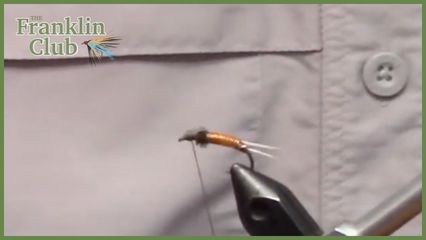
Prince Nymph
Recommended by: Gary Baldackin
The Prince Nymph is a classic pattern that continues to deliver results across various waters. Its distinctive peacock herl body and biot tails create an attractive, lifelike profile that entices fish in both slow and fast currents. This versatile fly is effective for trout and other gamefish, particularly in streams and rivers with diverse aquatic insect populations. By using a tungsten bead, you can make the fly sink faster, ensuring it reaches feeding zones quickly. Whether you are targeting wild or stocked fish, the Prince Nymph is a reliable addition to your fly box.
- Materials: Peacock herl, biot tails, and bead head.
- Tips: Use a tungsten bead for faster sinking. Recommended hook sizes: 12-16, which are perfect for catching trout and other gamefish in various water conditions.
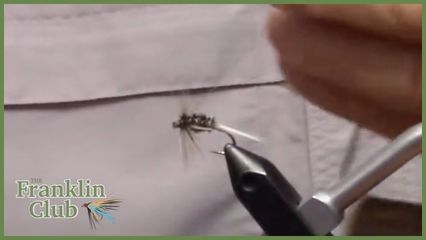
Pheasant Tail Nymph
Recommended by: Brian Vickery
A timeless and effective fly pattern, the Pheasant Tail Nymph is a must-have for any angler. Its natural tones and slim profile mimic a variety of aquatic insects, particularly mayfly nymphs. This makes it an excellent choice for targeting trout in both rivers and stillwaters. The Pheasant Tail Nymph is highly versatile and can be fished on its own or as part of a nymphing rig.
- Materials: Pheasant tail fibers, copper wire, and a bead head.
- Tips: Adjust the size to match local insect hatches and use a tungsten bead for faster sinking in deep or fast-moving water. Recommended hook sizes: 12-18 to cover a wide range of fishing conditions.
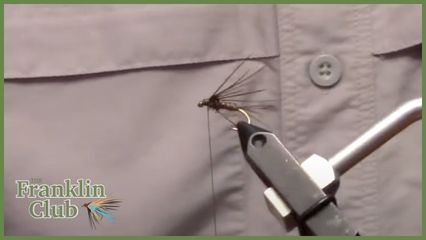
Mosquito Larva Fly
Recommended by: Brian Vickery
The Mosquito Larva Fly is a highly effective pattern for targeting fish in stillwater environments, particularly during the early season when mosquito larvae are abundant. This fly’s slender profile and subtle movement mimic the natural prey, making it irresistible to trout and panfish. Its simplicity makes it an excellent choice for anglers of all skill levels.
- Materials: Black thread, fine wire ribbing, and small bead head.
- Tips: Fish this fly slowly near the bottom to replicate the natural movements of mosquito larvae. Recommended hook sizes: 14-18 for matching the natural size of the larvae.
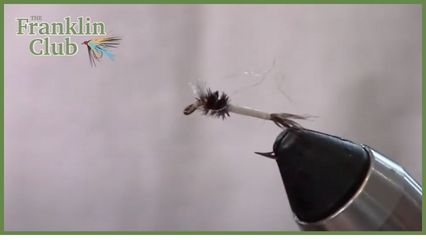
May Fly Nymph
Recommended by: Chris Krysciak
The May Fly Nymph is an essential pattern for imitating one of the most common and important food sources for trout. Its realistic design and movement make it highly effective in both rivers and stillwaters, especially during the nymph stage of a mayfly hatch. This fly works well in a variety of water conditions and can be fished as part of a nymphing rig or drifted under an indicator.
- Materials: Pheasant tail fibers, fine wire, rabbit fur dubbing and a bead head.
- Tips: Use this fly near the bottom where nymphs are most active. Recommended hook sizes: 14-18 to match the natural size of mayfly nymphs in your local waters.
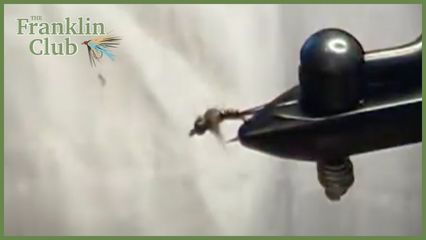
Final Thoughts
Stock up on these patterns during the off-season to ensure you’re always prepared for any fishing scenario. Whether you’re a seasoned angler or just starting out, these tried-and-true flies, recommended by Franklin Club members and seasoned Club Pros, will elevate your fly box and enhance your success on the water.
The Franklin Club Fly Tying Group
For those looking to elevate their fly tying skills and immerse themselves in the art, The Franklin Club Fly Tying Group is the perfect place to start. Members gather at the clubhouse to tie flies, exchange valuable tips, and learn from one another in a supportive and friendly environment. Whether you’re a seasoned tyer or new to the craft, this group provides an excellent opportunity to refine your techniques, experiment with innovative patterns, and deepen your connection to the sport. To make it even more special, guest tiers and professional fly tiers often lead sessions, sharing their expert insights and teaching advanced techniques.
Join us and become part of a vibrant community passionate about fly tying and fishing.


